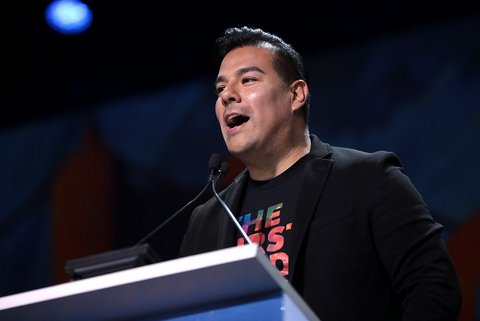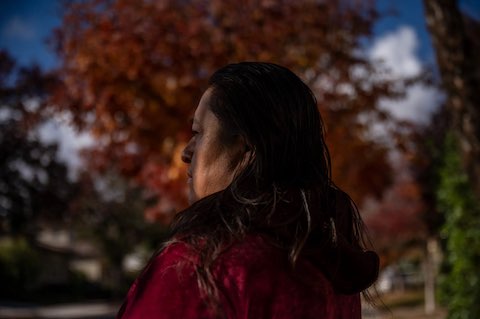
28 Jun Climate Change Driving California Home Insurance Crisis

California Insurance Commissioner Ricardo Lara, seen here speaking at the 2019 California Democratic Party State Convention, said, “California has an insurance crisis like nothing we’ve ever seen before” in a June press briefing. (“Ricardo Lara” by Gage Skidmore / Flickr / CC BY-SA 2.0 license)
By Joe Porrello
As California climate disasters increase, so too does the difficulty of buying or keeping a home.
Homeowners who once held somewhat financially comfortable insurance policies are now seeing local carriers underpay damages, hike their premiums, refuse coverage renewal, or pull out completely due to a higher likelihood of flooding or wildfires.
“Right now, it’s not enough to just shop for insurance,” said California Insurance Commissioner Ricardo Lara. “You need to hunt for it.”
And climate change is partly to blame.
It causes more frequent and severe rain and wildfires, according to the California Climate Adaptation Strategy. Seven of the 10 most destructive wildfires in state history, according to Cal Fire, occurred in the past decade.
Ethnic Media Services hosted a press teleconference June 7 on exactly how climate disasters are keeping Californians from homeownership and possible solutions, including the roles the insurance industry, government and individuals need to play.
Lara did not sugarcoat the situation.
“California has an insurance crisis like nothing we’ve ever seen before,” he said. “Some people cannot find insurance at any price.”
Lara said Prop. 103 — passed in 1988 with the intention of encouraging a competitive housing market and making insurance fair, available and affordable for all Californians — means insurance companies are not legally obligated to provide coverage to anyone.
To alleviate some of the pressure, Lara is heading the state’s largest insurance reform in over three decades.
“We essentially have been operating with 20th century regulation for a 21st century world. where climate change is affecting every aspect of our lives,” he said. “Only 2% of Californians have coverage for flooding, but flood disasters have happened in every single county over the last 30 years.”
The state Department of Insurance’s Sustainable Insurance Strategy will strengthen the commissioner’s authority to protect consumers and hold insurance companies accountable.
It will use “forward-looking tools to assess and price risk, like those used by every other state except California,” Lara said. “We cannot just look to the past to set our rates.”
Lara noted that especially in immigrant communities, people do not have proper coverage, and low-income people are often pushed into floodplains and wildfire areas.
“Discrimination is done by design,” he said.
The California FAIR plan was created in the late 1960s as a last resort for homeowners without insurance, but Lara says that has changed.
“It cannot be a first option for Californians, as we’ve been seeing the last few years,” he said. “Our wildfire data shows that half of the FAIR Plan policy holders do not have a Difference in Condition policy, leaving them without protection.”
The department is trying to improve the FAIR Plan to ensure practical insurance options for all.
To guard the property insurance market, the National Association of Insurance Commissioners’ adopted its first National Climate Resiliency Strategy for Insurance in March.
Lara says more must be done countrywide.
“There are things Congress can do right now that will help,” such as improving management of federal forests and watersheds and increasing funding for home hardening and other disaster defense, Lara said.
“We know that it’s much less expensive to prevent damage than to have to fix it after,” said Lara.
Vickie Kilgore, assistant vice president of the Insurance Research Council, said its research shows homeowners’ annual insurance expenditures steadily rose from 2001 through 2021, almost tripling from $536 to $1,411.
“In many cases, we don’t even have reliable data about how much worse this problem is becoming,” said Jordan Haedtler, climate financial strategist with the Sunrise Project and Climate Cabinet.
According to the Consumer Federation of America, an estimated 6.1 million homeowners representing $1.6 trillion in property value lack insurance, a number expected to grow alongside negative impacts of climate change.
Haedtler said a lack of insurance will cause businesses, homeowners and renters to incur costs they cannot afford after extreme weather damage and “will have no choice but to walk away from mortgages or other loans held by banks.”
And this would spill over into other economic areas.
Earlier this year, Federal Reserve Chair Jerome Powell confirmed that insurance prices are causing housing prices to increase — a big reason why inflation remains above the federal target.
“This is really a problem that affects all of us,” said Haedtler
Some of the negative effects of the crisis, he noted, could be removed by Rep. Adam Schiff, D-Burbank, who introduced the INSURE Act in January as a financial backstop after extreme weather damage.
Voting polls show interest is high in the economy but low in climate change, as less than half of the majority of 2020 voters considered the latter to be a very or somewhat important issue.
“Many people don’t draw the connection between these economic impacts and the need for actual climate change policy,” said Carol Kousky, associate vice president for economics and policy at the Environmental Defense Fund.
She says sociology studies indicate financial inequality can be worsened by a lack of insurance, and that high insurance rates translate into lower home values.
“There’s a lot of barriers in our market right now to greater inclusivity,” Kousky said. “Disaster insurance fundamentally costs more than non-disaster insurance, and this can put it out of reach for many households.”
EDF found low-income households less likely to get fair claim payouts and report insurance being useful. It also designed a framework of inclusive insurance for appropriate and affordable protection for those underserved by the present market.
Stabilizing the market stress, Kousky says, “can only be done through transformative investments in risk-reduction… We need greater climate adaptation.”
Kousky says land use and where structures are built need to be looked at with climate change in mind.
To minimize damage, Haedtler said the government and public must be proactive.
“So many of the financial stability issues that I work on around banking and insurance regulation are very dry and not particularly appealing to the public until massive crisis happens,” he said.
Lara says many are forced to be aware of the problem.
“We’ve had town halls in every county in the state, and as you could imagine, people are scared; they’re frustrated when they’re losing insurance,” he said.
But there is some solace provided by the DOI.
“You don’t have to settle,” said Lara.
Multilingual assistance can be found by calling the Department of Insurance at 1-800-927-4327 or visiting insurance.ca.gov.






No Comments